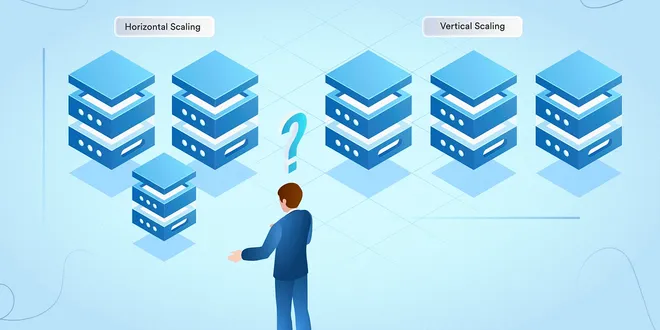Data Science & Developer Roadmaps with Chat & Free Learning Resources
scalability
Scalability refers to the capability of a system to handle an increasing amount of work or its potential to be enlarged to accommodate growth. In the context of software and system design, scalability is crucial for ensuring that applications can manage rising user demands, data volumes, and transaction loads without compromising performance. There are two primary types of scalability: horizontal scaling, which involves adding more machines to distribute the load, and vertical scaling, which enhances the power of existing machines. Understanding scalability is essential for building resilient and efficient systems that can adapt to changing requirements over time.

Scaling Up: The Art of System Design Scalability
Photo by Taylor Vick on Unsplash In today’s digital age, the demand for scalable systems has grown exponentially. Scalability is the ability of a system to handle increasing amounts of work or its pot...
📚 Read more at Level Up Coding🔎 Find similar documents

Scalability vs. Elasticity
Understanding the main difference between scalability and elasticity Photo by Daniele Franchi on Unsplash In system design, there are two single words are confusing, which are scalability and elastic...
📚 Read more at Better Programming🔎 Find similar documents

Scalability
It is easier to scale applications that are limited in scope. One reason for that is that there are fewer potential bottlenecks. Scaling smaller pieces of a workflow is also more cost-effective. Imagi...
📚 Read more at Software Architecture with C plus plus🔎 Find similar documents

Building An Application That Scales
Scalability is the potential of an application to handle a growing number of users, customers, clients. It also defines how maintainable the application is over time. In this article, we are going to…...
📚 Read more at Level Up Coding🔎 Find similar documents

Scalable Architectures: Building for Growth and Performance
In the ever-evolving landscape of software development, the ability to create systems that can seamlessly adapt to growth and deliver optimal performance is an art form. After a decade in the field, I...
📚 Read more at Javarevisited🔎 Find similar documents

On Building Scalable Systems
Understanding scalability Continue reading on Better Programming
📚 Read more at Better Programming🔎 Find similar documents

Scalability in the Cloud: Vertical vs Horizontal Scaling
Hello, everyone. In this article, let us see about Scalability in the cloud and the 3 types of scaling — Horizontal, Vertical and Diagonal scalingScaling is a process that alters the size of any syste...
📚 Read more at Javarevisited🔎 Find similar documents

Mastering Scalability in System Design: How I Learned the Techniques, Principles, and Best…
Master scalability and impress your interviewer by learning the principles, techniques, and best practices of scalable system design. We underestimate the importance of scalability during interviews…
📚 Read more at Level Up Coding🔎 Find similar documents

What is Reliability
When you are building a software application or a service, I’m sure you’ve heard of these big words: scalability, maintainability, and reliability. Everyone talks about it. Everyone just throws these…...
📚 Read more at Level Up Coding🔎 Find similar documents

Architecting a Scalable and Fault-Tolerant System for a Million Users
Creating a website or an online platform is one thing, but making it handle multiple users without any performance issues or downtime is another. As your user base grows, the traditional architecture ...
📚 Read more at Level Up Coding🔎 Find similar documents

Building Scalable Systems
Building a Reactive System is all about the balance between consistency and availability and how they impact the scalability of a reactive system.
📚 Read more at Level Up Coding🔎 Find similar documents

Django Unchained: Scalability!?
Nowadays modern, scalable applications are usually built using the design and development methodology Domain Driven Design (DDD). From a technological perspective the most common “deployment units”…
📚 Read more at Python in Plain English🔎 Find similar documents

